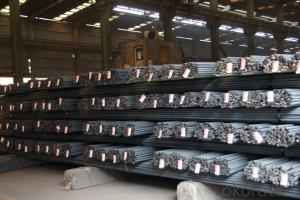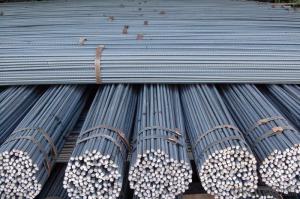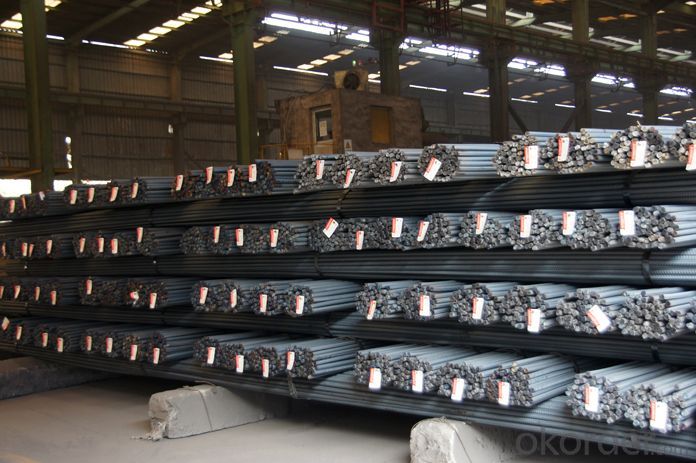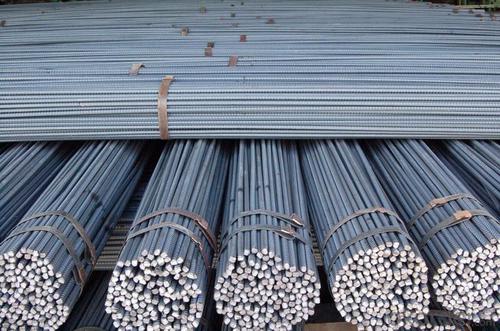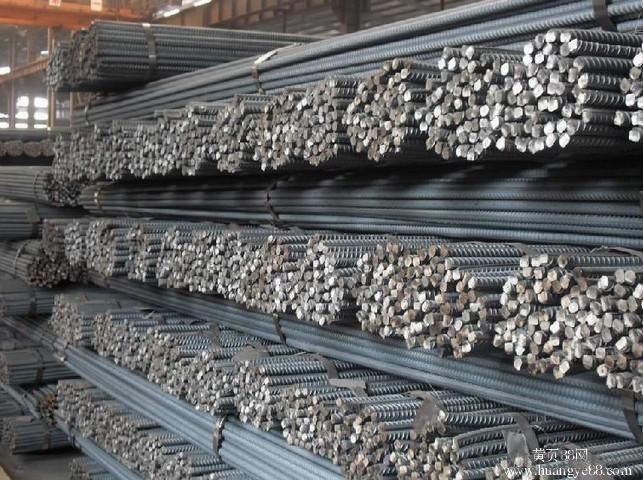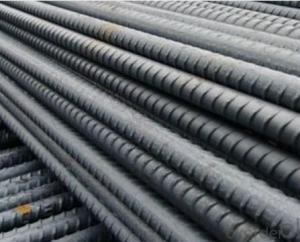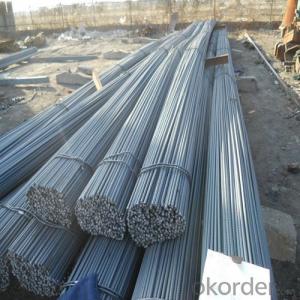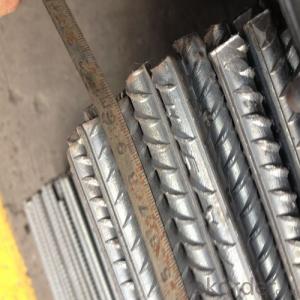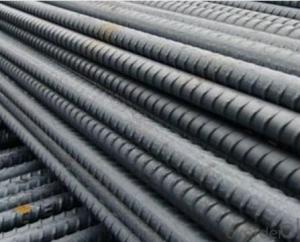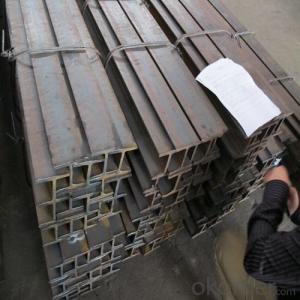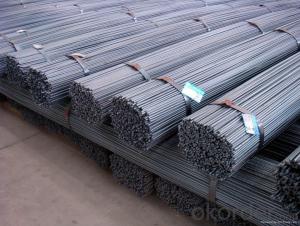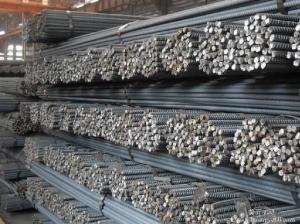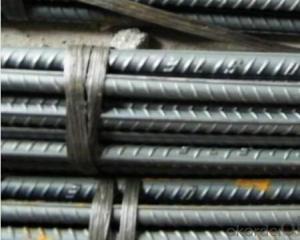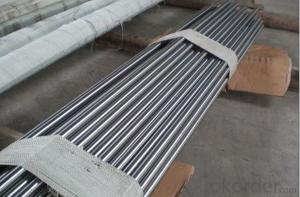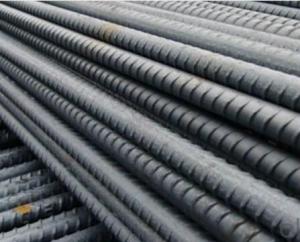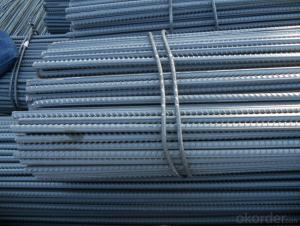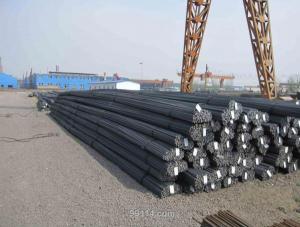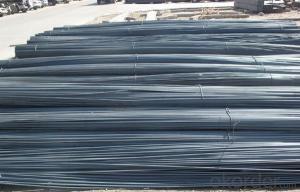Deformed bars with grade HRB400,high quality
- Loading Port:
- Tianjin
- Payment Terms:
- TT OR LC
- Min Order Qty:
- 25 m.t.
- Supply Capability:
- 100000 m.t./month
OKorder Service Pledge
OKorder Financial Service
You Might Also Like
Product Description:
Specifications of HRB400 Deformed Steel Bar:
Standard | GB | HRB400 | |
Diameter | 10mm-32mm | ||
Length | 6M, 12M | ||
Place of origin | Hebei, China mainland | ||
Advantages | exact size, regular package, chemical and mechanical properties are stable. | ||
Type | Hot rolled deformed steel bar | ||
Chemical Composition: (Please kindly find our chemistry of our material based on HRB400 as below for your information)
Grade | Technical data of the original chemical composition (%) | ||||||
C | Mn | Si | S | P | V | ||
HRB400 | ≤0.25 | ≤1.60 | ≤0.80 | ≤0.045 | ≤0.045 | 0.04-0.12 | |
Physical capability | |||||||
Yield Strength (N/cm²) | Tensile Strength (N/cm²) | Elongation (%) | |||||
≥400 | ≥570 | ≥14 | |||||
Theoretical weight and section area of each diameter as below for your information:
Diameter(mm) | Section area (mm²) | Mass(kg/m) | Weight of 12m bar(kg) |
18 | 254.5 | 2.00 | 24 |
20 | 314.2 | 2.47 | 29.64 |
22 | 380.1 | 2.98 | 35.76 |
Usage and Applications of HRB400 Deformed Steel Bar:
Deformed bar is widely used in buildings, bridges, roads and other engineering construction. Big to highways, railways, bridges, culverts, tunnels, public facilities such as flood control, dam, small to housing construction, beam, column, wall and the foundation of the plate, deformed bar is an integral structure material. With the development of world economy and the vigorous development of infrastructure construction, real estate, the demand for deformed bar will be larger and larger..
Packaging & Delivery of HRB400 Deformed Steel Bar:
Packaging Detail: products are packed in bundle and then shipped by container or bulk vessel, deformed bar is usually naked strapping delivery, when storing, please pay attention to moisture proof. The performance of rust will produce adverse effect.
Each bundle weight: 2-3MT, or as required
Payment term: TT or L/C
Delivery Detail: within 45 days after received advanced payment or LC.
Label: to be specified by customer, generally, each bundle has 1-2 labels
Trade terms: FOB, CFR, CIF
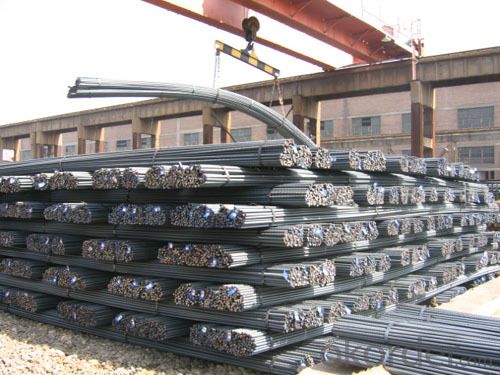
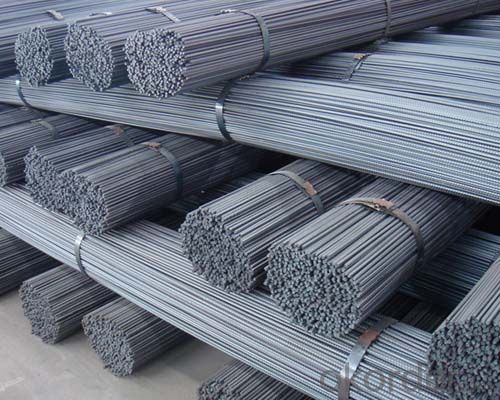
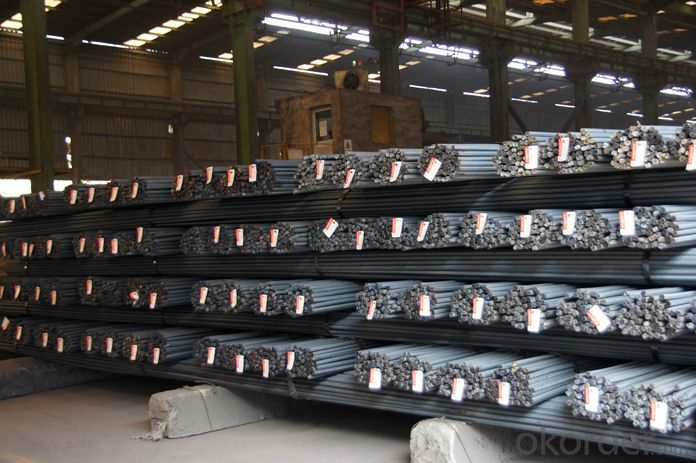
*If you would like to get our price, please inform us the size, standard/material and quantity. Thank you very much for your attention.
- Q: Can steel rebars be used in structures with curved or irregular shapes?
- Yes, steel rebars can be used in structures with curved or irregular shapes. The flexibility and malleability of steel allow rebars to be bent and shaped according to the desired design, making it suitable for various architectural and engineering applications.
- Q: How are steel rebars protected from fire during construction?
- Steel rebars are typically protected from fire during construction through the application of fire-resistant coatings or by encasing them in fire-resistant materials, such as concrete. These protective measures help to prevent the steel rebars from reaching temperatures that could compromise their structural integrity in the event of a fire.
- Q: Can steel rebars be used in road or highway construction?
- Road or highway construction can utilize steel rebars. Reinforcing bars, also known as steel rebars, are commonly employed in the construction sector to bolster the strength and support of concrete structures. In the realm of road and highway construction, rebars are typically utilized in the creation of reinforced concrete pavements, bridge decks, and retaining walls. By embedding rebars in concrete, its tensile strength can be enhanced, as concrete is robust in compression but weak in tension. The addition of rebars to the concrete aids in distributing tensile forces, thus enhancing the overall longevity and load-bearing capacity of road or highway infrastructure. The utilization of steel rebars in road or highway construction presents numerous advantages. Firstly, it enhances the structural integrity and lifespan of the infrastructure, as reinforced concrete structures are better equipped to withstand heavy traffic loads, temperature fluctuations, and environmental factors. Secondly, rebars assist in mitigating cracking and deterioration of the concrete, thereby reducing the necessity for frequent repairs and maintenance. Additionally, the utilization of rebars allows for more efficient and cost-effective construction, as it permits the use of thinner concrete sections without compromising strength. All in all, steel rebars are an indispensable component in road or highway construction, as they provide the essential reinforcement to ensure the strength, durability, and longevity of the infrastructure.
- Q: Can steel rebars be used in structures with high radiation shielding requirements?
- Structures with high radiation shielding requirements can indeed utilize steel rebars. Steel is renowned for its remarkable strength and durability, making it a favored option for reinforcing concrete structures. In terms of radiation shielding, steel rebars possess the capability to effectively offer a certain level of protection due to their dense composition. Although steel itself is not as potent a radiation shield as materials like lead or concrete, it still plays a role in reducing radiation transmission. The density of steel aids in dispersing and absorbing some of the radiation that passes through the structure, thus diminishing overall exposure. However, it is crucial to recognize that structures with exceptionally high radiation shielding requirements may necessitate additional measures. These measures could involve incorporating other radiation-absorbing materials such as lead or concrete, or implementing specific design features to enhance the structure's shielding capabilities. Ultimately, the selection of materials and design considerations should be made in collaboration with radiation safety experts and engineers who can evaluate the specific shielding requirements and propose the most suitable solutions.
- Q: Are steel rebars suitable for use in structures with high vibration levels?
- Steel rebars are commonly used in structures with high vibration levels. The strength and durability of steel rebars make them suitable for such applications. When structures are subjected to high vibration levels, the rebars help to provide stability and prevent any potential damage or failure. Steel rebars have excellent tensile strength, which enables them to withstand the dynamic forces generated by vibration. Additionally, steel rebars have good ductility, allowing them to absorb and dissipate energy during vibrations, thereby reducing the risk of structural damage. Proper design and installation techniques, including the use of appropriate reinforcement detailing, can further enhance the performance of steel rebars in structures with high vibration levels. Overall, steel rebars are a reliable choice for ensuring the structural integrity and safety of buildings and infrastructure exposed to significant vibrations.
- Q: Can steel rebars be used in cold weather construction?
- Yes, steel rebars can be used in cold weather construction. Steel is a durable and strong material that can withstand low temperatures. However, precautions should be taken to prevent the rebars from freezing or getting damaged due to extreme cold. Special measures like heating, insulation, or using anti-freeze admixtures can be implemented to ensure the proper functioning of steel rebars in cold weather construction.
- Q: How do steel rebars affect the constructability of projects in remote locations?
- The constructability of projects in remote locations heavily relies on steel rebars. These rebars have a significant impact on construction projects in such areas in multiple ways. To begin with, the structural integrity of concrete elements greatly depends on steel rebars. By imparting tensile strength to concrete, rebars ensure that structures can withstand different loads and external forces. This becomes particularly crucial in remote locations where construction materials might be scarce. Steel rebars facilitate the construction of sturdy and long-lasting structures, ensuring their resilience even in harsh environmental conditions. Furthermore, remote locations often lack infrastructure and have limited access to skilled labor. However, steel rebars, with their standardized sizes and shapes, simplify construction processes and make them more efficient to manage. They can be easily transported and assembled on-site, reducing the need for complex and time-consuming construction techniques. This proves particularly advantageous in remote areas where the transportation of heavy construction materials can be arduous and expensive. Additionally, steel rebars enable the construction of taller and larger structures, which is vital in remote locations where land may be scarce. By reinforcing concrete elements, rebars allow for the construction of high-rise buildings or bridges, maximizing the utilization of available space and resources. This is especially pertinent in areas with limited land availability, where vertical construction often proves to be the most viable option. Moreover, steel rebars contribute to the overall safety of construction projects in remote locations. Their ability to reinforce concrete elements ensures that structures can withstand seismic activities or other natural disasters, which may be more frequent in certain remote areas. This enhances the resilience of the built environment, safeguarding both construction workers and the inhabitants of these remote locations. In conclusion, steel rebars play a crucial role in the constructability of projects in remote locations. They provide essential reinforcement to concrete structures, enhance efficiency in construction processes, enable the construction of larger structures, and ensure the safety and durability of the built environment. Their utilization in such areas is indispensable in overcoming the challenges posed by limited resources, difficult accessibility, and harsh environmental conditions.
- Q: What is hot rolled coil? Hot rolled coil relative to thread steel and other steel, is not considered a higher point?
- A hot rolled coil is a flat, flat material that is rolled by a billet at a certain temperature. The thread steel is a long piece of steel pulled out at a certain temperature. There is no high or no advanced problem between the two.
- Q: Can steel rebars be used in structures with limited construction budget?
- Indeed, structures with a limited construction budget can incorporate steel rebars. The utilization of steel rebars is widespread in construction due to their robustness and durability. They contribute to the support and reinforcement of concrete, enhancing its resistance to tension and cracking. Although steel rebars may entail higher initial expenses in comparison to alternative materials, they present long-term economic benefits. By employing steel rebars, structures can enjoy an extended lifespan, thereby reducing the necessity for frequent repairs or replacements. Moreover, the prefabrication of steel rebars saves time and labor costs during the construction process. Additionally, steel rebars can be effortlessly recycled, rendering them a sustainable preference for construction projects. The recycling of steel diminishes the requirement for extracting raw materials and lessens the environmental impact. All in all, steel rebars represent an exceptional option for structures operating within limited construction budgets. They provide durability, longevity, and cost savings in the long run, thereby constituting a financially prudent choice for construction projects.
- Q: Can steel rebars be used in industrial structures?
- Yes, steel rebars can be used in industrial structures. They are commonly used for reinforcing concrete in various industrial constructions such as bridges, buildings, and infrastructure projects. Steel rebars provide strength, durability, and resistance to structural loads, making them suitable for use in industrial settings.
Send your message to us
Deformed bars with grade HRB400,high quality
- Loading Port:
- Tianjin
- Payment Terms:
- TT OR LC
- Min Order Qty:
- 25 m.t.
- Supply Capability:
- 100000 m.t./month
OKorder Service Pledge
OKorder Financial Service
Similar products
Hot products
Hot Searches
Related keywords
